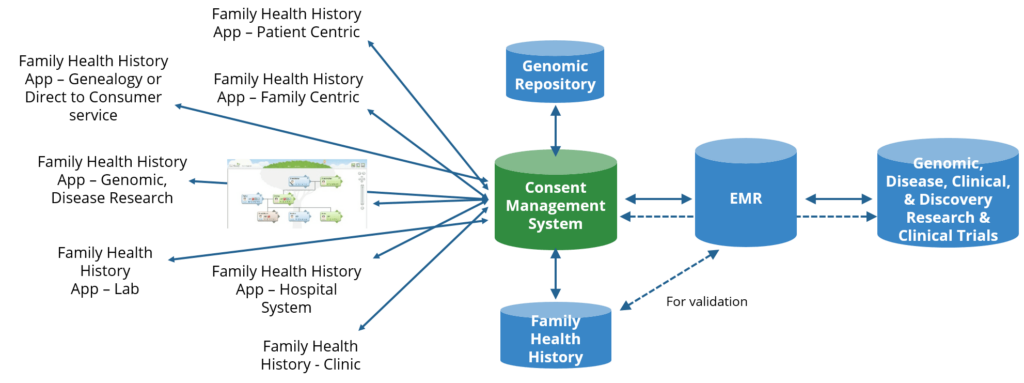Future Model of Family Health History
With multiple stakeholders all collecting and storing FHH data separately, the most efficient model would be a shared family-centric record, with access controlled by each family member to support their own needs. Each family member chooses what they want shared about themselves. The diagram below attempts to illustrate the following points –
- Each member in the family record may consent access to their data under one or more roles – as a manager of their own healthcare or of a dependent, in multiple settings as a patient in a clinic or hospital, in validating their information with one or more electronic medical record systems, and as a research study participant. Therefore, the Consent Management System becomes the focal point of the model.
- On the left side of the diagram, several FHH tool categories are listed. They will be used by multiple stakeholders – some to create data, others only to read data from FHH repository.
- The FHH repository data can be validated from the EMR records of family members.
- When permissioned, data read from another patient-owned repository containing genomic data, can be combined with FHH data in risk analysis.
- FHH analysis results, updated over a lifetime when new information is available, can be stored in the patient EMR.
- When permissioned, research studies can read FHH, genomic, and EMR data.
This model becomes even more powerful when the medical record itself also becomes centralized and controlled by the patient. A powerful ecosystem of apps would arise from that model too.




